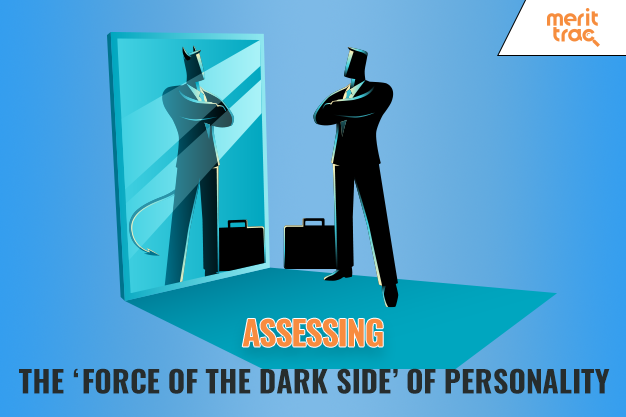
Assessing the ‘Force of the Dark side’ of Personality
Date: 09/08/2019 | Posted by: Meghana Jitendra | Category: Corporate , Personality Assessment
Don’t we all know at least one colleague or worked with at least one team lead who seems narcissistic or egoistic, or just doesn’t cooperate, is insensitive or may be too impulsive, whose passive aggressive attitude is too much to take, or is very distrustful, or someone who has a reputation of being manipulative? I bet we all know such people. But what if we are ‘that person’, viewed similarly by our co-workers? Do we also harbor such precarious personality traits in ourselves?
Precarious personality traits, commonly understood as ‘dark’ traits, are those traits are undesirable and dysfunctional in some aspect, hindering healthy and acceptable interactions with the environment and the people around us. The most commonly observed and discussed ones include Narcissism, Egoism, Non-cooperation, Passive-aggression, Impulsiveness, Distrustfulness, Insensitiveness and Machiavellism.
Extreme versions of ‘ordinary’ traits can also become dysfunctional and thus ‘dark’. Too humble? It could be self-abasing humility, seen in people who always put themselves and their achievements down. Extremely high conscientiousness could mean perfectionism and micromanaging. Extraordinary empathy isn’t great either, as it may result in identity diffusion. Being very accommodative of other people might make you a push-over and indecisive if you try to accommodate and please everyone all the time. Afterall, ‘anything in excess is poison’, even personality traits.
Several industry experts have spoken about the negative impact of precarious or ‘dark’ personality traits at work. Attrition, poor work and client relationships, low team satisfaction, loss of productivity, distressed colleagues and team members, counterproductive work climate and so on: The list could go on.
So, what do we do about this? With the development of the science of psychometry and psychodiagnostics, we do have tests that can measure and identify not only the extreme, dysfunctional levels of personality traits, but also personality traits that are essentially ‘dark’.
Do we ‘screen out’ candidates with dark personality characteristics using personality assessments? Sounds easier than it is. There are several problems involved in the process of ‘screening out’ such precarious personality traits. Firstly, behavioural and personality tests must be valid enough to actually measure precarious personality traits. Strong theoretical and research foundation, along with statistical measures of validity can help develop good tests that serve the purpose.
Secondly, more than the test items themselves, it is the score interpretation that is the key to identifying precarious personality traits. Skilled psychologists and psychometricians are to be called upon, because if detecting precarious personality traits is tricky, then basing decisions on this assessment is no child’s play. Labelling should be avoided, especially when dealing with ‘dysfunctional’ and undesirable characteristics of a person. Keeping that in mind, test interpretation, when used rightly, can provide valuable insights into precarious personality traits of the test taker.
Lastly, precarious traits don’t exist in isolation. They are inevitable parts of a person’s personality. Precarious traits may come as part of a whole package of personality traits, most of which may be desirable. Any person may be prone to developing or expressing precarious personality traits in certain contexts, or certain environments (where such traits may be rewarded, encouraged or observed in ‘role models’). ‘Screening out’ may not be the best idea.
What next? Recruiters can reconsider and re-examine candidates and employees with precarious personality traits, using the right personality and behavioural tests, with sound test interpretation.
Attempts can be made to match such individuals to the right job roles, to minimize the negative impact of precarious personality traits. For example, distrustful/skeptical individuals would do better as lawyers than as counsellors.
In the case of the extreme versions of personality traits, individuals can use personality tests to identify and understand the precarious side of their personality traits, the healthy limits and expressions of those traits and identify areas of developing the ‘bright’ side of such traits.
The first step to tackle precarious traits is awareness. Individuals should identify, acknowledge and accept their precarious traits as a part of their personality and seek to work on them. Manager and coaches can help by being aware of the precarious traits of their reportees and help them achieve a healthy expression of their traits. A 360-degree feedback approach could help leaders keep their precarious personality traits under check.
Personality and behavioural tests can, thus, be used to switch on the light on the ‘dark’ side.
May the force be with you!












 Sales Hotline: USA: +1 646 916 0939 / Others: +91 80619 14700
Sales Hotline: USA: +1 646 916 0939 / Others: +91 80619 14700


